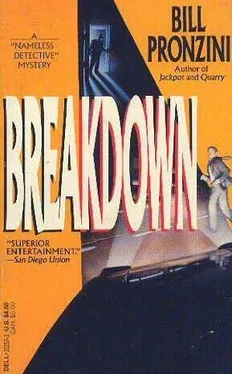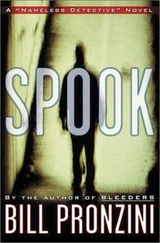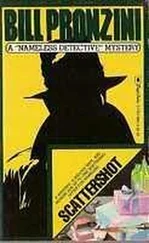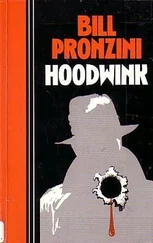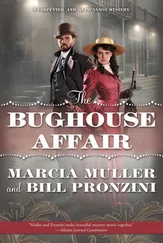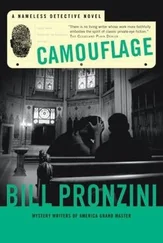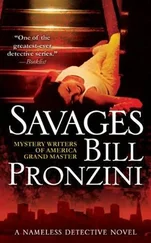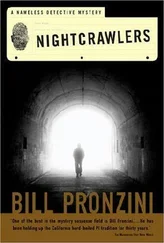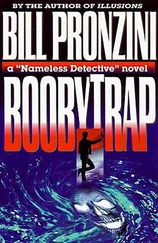Bill Pronzini - Breakdown
Здесь есть возможность читать онлайн «Bill Pronzini - Breakdown» весь текст электронной книги совершенно бесплатно (целиком полную версию без сокращений). В некоторых случаях можно слушать аудио, скачать через торрент в формате fb2 и присутствует краткое содержание. Год выпуска: 0100, Жанр: Криминальный детектив, на английском языке. Описание произведения, (предисловие) а так же отзывы посетителей доступны на портале библиотеки ЛибКат.
- Название:Breakdown
- Автор:
- Жанр:
- Год:0100
- ISBN:нет данных
- Рейтинг книги:3 / 5. Голосов: 1
-
Избранное:Добавить в избранное
- Отзывы:
-
Ваша оценка:
- 60
- 1
- 2
- 3
- 4
- 5
Breakdown: краткое содержание, описание и аннотация
Предлагаем к чтению аннотацию, описание, краткое содержание или предисловие (зависит от того, что написал сам автор книги «Breakdown»). Если вы не нашли необходимую информацию о книге — напишите в комментариях, мы постараемся отыскать её.
Breakdown — читать онлайн бесплатно полную книгу (весь текст) целиком
Ниже представлен текст книги, разбитый по страницам. Система сохранения места последней прочитанной страницы, позволяет с удобством читать онлайн бесплатно книгу «Breakdown», без необходимости каждый раз заново искать на чём Вы остановились. Поставьте закладку, и сможете в любой момент перейти на страницу, на которой закончили чтение.
Интервал:
Закладка:
According to everyone we’d talked to, the Lujacks and Hanauer got along fine: no personal or business rifts of any kind. Yet on the evening of Tuesday, December 5, Frank Hanauer had been deliberately run down and killed by a Cadillac Seville belonging to and allegedly driven by Thomas Lujack.
The two men had worked late that night, long past the company’s five o’clock closing, on the feasibility of opening a branch factory in Fresno. Coleman Lujack had stayed late, too, but only until six fifteen. When he left, his brother and Hanauer were the only ones on the premises. Both Lujacks swore that the work had gone smoothly, with not even a minor disagreement.
A little after seven o’clock, Hanauer had left the premises alone and set out on foot along Industrial Way, the dead-end street on which Containers, Inc., was located. That morning he’d left his car at an auto body shop a block away, to have a dent in the fender repaired; the shop was closed by that time, but because Hanauer had expected to work late, he’d made arrangements with the shop’s owner to leave the car locked outside. He had walked about a hundred yards when Thomas Lujack’s Caddy swung off the factory grounds, accelerated, veered into Hanauer when he tried to dodge out of the way, continued to the open end of the street at a high rate of speed, and disappeared east on Bayshore Boulevard.
There were two known witnesses to the hit-and-run-and maybe an unknown third. Industrial Way is just what its name implies, a street lined with a variety of small manufacturing companies and warehouses; none of the businesses operates at night, so at 7:00 P.M. the street is virtually deserted. On this particular Tuesday, however, the Lujacks and Frank Hanauer weren’t the only ones working late. An accountant named Allen Dinsmore, employed by Soltech, a solar-heating equipment company, was finishing up an overdue profit-and-loss statement. And Nick Pendarves, shop supervisor at a roofing supply outfit called Roofco, who had put in some overtime checking a late-arriving shipment of shingles, had just locked up and was about to get into his car.
The hit-and-run happened right in front of Roofco, less than fifty feet from where Pendarves was standing. It was dark, but there was a moon that night, and a streetlamp not far away; Pendarves claimed he’d had a clear look at the man driving the Caddy. It was Thomas Lujack, he said, and no mistake. He knew Thomas by sight, recognized him instantly. Allen Dinsmore could neither corroborate nor refute Pendarves’s ID. He had been more than seventy-five yards away, too far to tell much of anything about the driver.
Dinsmore did contribute one potentially important observation: After the car struck Hanauer and roared away, he saw Pendarves come running out to where Hanauer lay in the street; and he said he had an impression that there was another person standing near Pendarves’s car, someone who had also witnessed the hit-and-run. But he couldn’t be sure because of the distance, the unsure lighting, and the fact that it had all happened so fast; it might have been nothing more than a shadow. There was no sign of a third witness when he ran outside and joined Pendarves. And Pendarves had flatly denied that anyone had been with him on the Roofco lot.
It was Dinsmore who called the police. Two patrol cars and an Emergency Services ambulance arrived within fifteen minutes. Hanauer was beyond help; the Daly City coroner said later that he must have died instantly. The ambulance had been there about a minute when Thomas Lujack came hurrying on foot out of the Containers, Inc., yard-lured to the scene, he claimed, by the ambulance siren. He expressed amazement, dismay, bewilderment at the death of Hanauer and Pendarves’s accusation that he had been driving the car. He said he’d been in his office working since Hanauer’s departure; stated that as far as he knew, his Cadillac was still parked on the factory lot; admitted that yes, he’d heard the screeching tires and gunned engine a few minutes earlier but assumed it was just wild-riding kids. Why would he run down Frank Hanauer, for God’s sake? They’d been friends and business partners for close to twenty years.
The police had checked the Containers, Inc., lot and found Thomas’s Cadillac missing. It hadn’t taken them long to locate it, abandoned on Bayshore Boulevard less than a quarter mile from the entrance to Industrial Way. The right front fender was caved in, fresh blood and skin tissue and bone fragments adhering to the grille. The key was still in the ignition-a spare key, Thomas said, one he’d kept in a magnetized container behind the rear bumper. His other key was on his ring, and the container was no longer behind the bumper. Who knew he’d kept it there? Why, nobody except his wife and brother. But it was a common hiding place for a spare key; or maybe someone had seen him getting it at the factory one day a couple of weeks ago, when he’d misplaced his key ring. Somebody must be trying to frame him, he said … but he had no idea of who or why.
They didn’t believe him. Pendarves stood fast to his ID of Lujack as the Caddy’s driver; Thomas admitted to being the only person at the factory after Hanauer left; and there was the fact that the Caddy had been abandoned close by. The police theorized that Thomas had returned to Containers, Inc., on foot through the old railroad yards that paralleled Industrial Way to the east. He’d had plenty of time to do that, and to concoct his story on the way; and it being night and the area deserted, he could have managed it without being seen. The evidence was enough so that they’d arrested him on a charge of vehicular homicide.
He’d hired Paul Glickman, who convinced a judge to set a reasonable bail. Meanwhile, the police turned up no apparent motive for Thomas to have murdered Hanauer-but this was canceled out, as far as they were concerned, by the fact that Thomas had a violent temper and an arrest record: He had once been charged with aggravated assault in a restaurant dispute. The week after Christmas, the San Mateo County DA’s office decided to prosecute on a charge of second-degree homicide. The DA refused to plea-bargain, but Thomas said he wouldn’t have pled guilty to a reduced charge anyway because he was an innocent man. If and when the case came to trial, Glickman would defend him on that basis.
And that was where Eberhardt and I came in.
Our job was to a) prove Thomas Lujack’s innocence by finding out who had stolen his car and run down Hanauer, and why; or b) discredit Pendarves’s damning testimony by proving that he was an unreliable witness. In three weeks we hadn’t been able to do either. Dozens of interviews and background checks, and my nightly fishing trips at the Hideaway, had produced zero answers and zero leads.
No one seemed to have any motive for doing away with Frank Hanauer. He had been well liked by everybody; had never spoken of problems with Thomas or Coleman Lujack or anyone else at Containers, Inc. For all intents and purposes, he was as unlikely a candidate for murder as you could find.
Similarly, no one seemed to have the kind of grudge against Thomas that would lead to a murder frame. He was mostly well liked, despite his roughhouse temper; happily married and afflicted with no major vices. The only possible enemy we were able to turn up was the man he’d had the fight with in the restaurant. But that had happened five years ago; and the other party-a salesman-said he barely remembered the incident, and besides, he’d been in New York on a business trip on December 5.
There were no black marks against Nick Pendarves, either, unless you counted the fact that his wife had divorced him in 1984 for unspecified reasons, and refused to talk to us when we contacted her at her present address in Chico. He had worked for Roofco for twenty-three years and was considered a valued employee; he lived alone in his house on Rivera Street and had never had any problems with his neighbors; he spent part of almost every evening at the Hideaway, the only socializing of any kind that he indulged in. He had no close friends-no friends at all, apparently, except for other patrons of the tavern. He was a taciturn man, one who kept to himself for the most part and was not easy to know. But if nobody particularly liked him, nobody particularly disliked him either. We couldn’t find any reason why he would have lied in his positive ID of Thomas Lujack as the hit-and-run driver, or why he would lie about the presence of a third witness. Nor could we find even a mote of evidence to verify that there had been a third witness. None of the other Roofco employees had been given permission to work overtime that night, and Pendarves had been alone in the building when the last of his coworkers left. That seemed to rule out a Roofco employee as the ethereal witness; and the deserted nature of Industrial Way at 7:00 P.M. on a Tuesday night seemed to rule out a passerby or someone who had come for a personal rendezvous with Pendarves.
Читать дальшеИнтервал:
Закладка:
Похожие книги на «Breakdown»
Представляем Вашему вниманию похожие книги на «Breakdown» списком для выбора. Мы отобрали схожую по названию и смыслу литературу в надежде предоставить читателям больше вариантов отыскать новые, интересные, ещё непрочитанные произведения.
Обсуждение, отзывы о книге «Breakdown» и просто собственные мнения читателей. Оставьте ваши комментарии, напишите, что Вы думаете о произведении, его смысле или главных героях. Укажите что конкретно понравилось, а что нет, и почему Вы так считаете.
